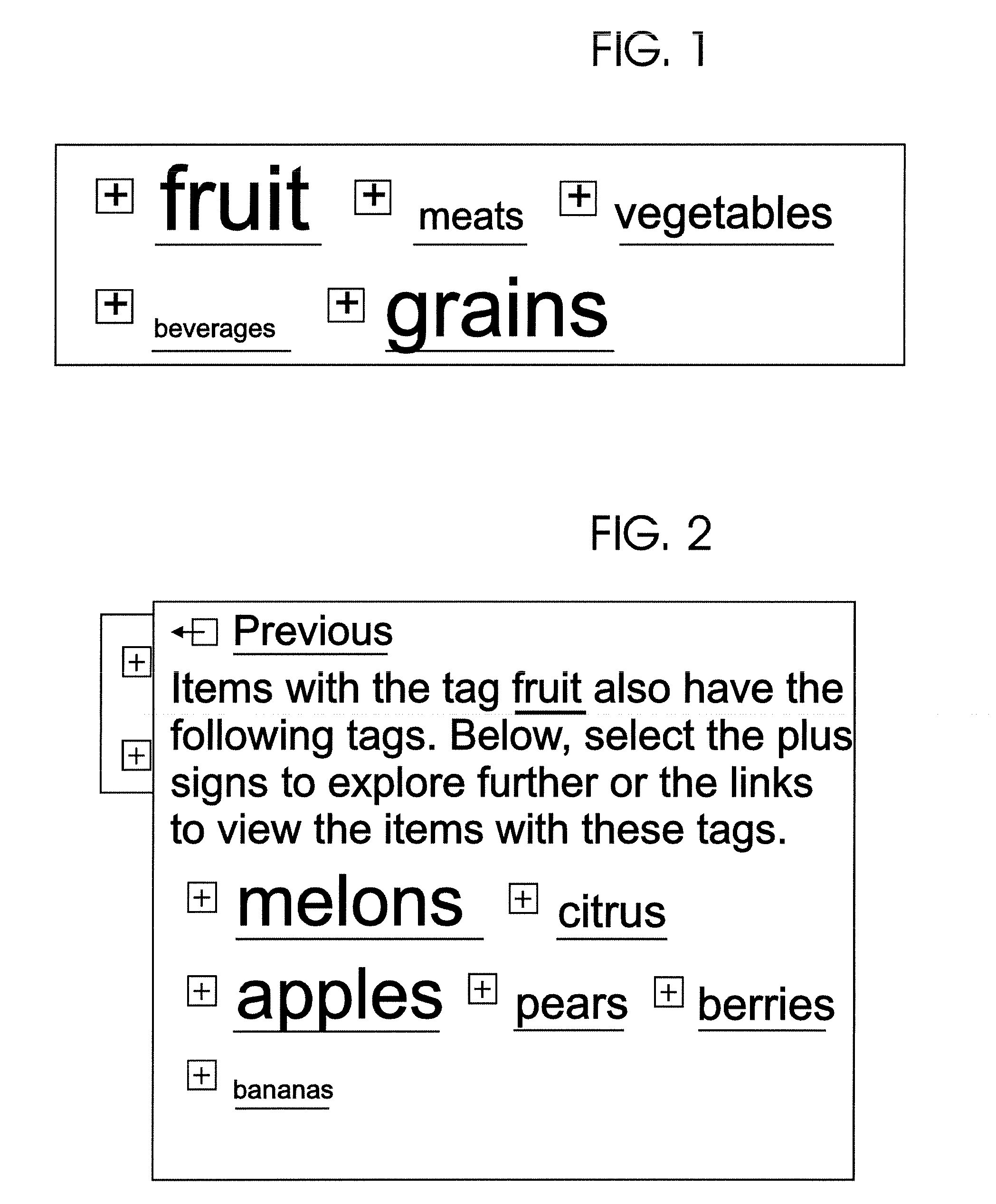Cascading clouds
a cloud and cascading technology, applied in the field of cascading clouds, can solve problems such as slow performance, and achieve the effects of improving performance and searching efficiency, easy to view history, and quick identification of desired tags
- Summary
- Abstract
- Description
- Claims
- Application Information
AI Technical Summary
Benefits of technology
Problems solved by technology
Method used
Image
Examples
Embodiment Construction
[0016]Disclosed herein are “cascading clouds” that allow a user to browse through related tags without actually retrieving items marked with the tags that were previously selected or viewed by the user. This method also permits one to browse through related tags without having to refresh the web page thus improving performance and searching efficiency. It advantageously permits the user to quickly locate the desired tags and then display one list of resulting items. The design provides the user with a method to expand a tag and thereby to show related tags in addition to providing the user with an easily viewable history of the tags that were already reviewed.
[0017]The term “tag” as used herein is a link which can be selected by the user to navigate a selected website.
[0018]With reference now to the FIG. 1, a first level for a tag cloud depicts a list of tags between which the user desires to make a choice. Each tag has located next to it a plus icon that permits the user to navigat...
PUM
 Login to View More
Login to View More Abstract
Description
Claims
Application Information
 Login to View More
Login to View More - R&D
- Intellectual Property
- Life Sciences
- Materials
- Tech Scout
- Unparalleled Data Quality
- Higher Quality Content
- 60% Fewer Hallucinations
Browse by: Latest US Patents, China's latest patents, Technical Efficacy Thesaurus, Application Domain, Technology Topic, Popular Technical Reports.
© 2025 PatSnap. All rights reserved.Legal|Privacy policy|Modern Slavery Act Transparency Statement|Sitemap|About US| Contact US: help@patsnap.com



